
Chemnitz is the third largest city in the German federal state of Saxony after Leipzig and Dresden. It is the 28th largest city of Germany as well as the fourth largest city in the area of former East Germany after (East) Berlin, Leipzig and Dresden. The city is part of the Central German Metropolitan Region, and lies in the middle of a string of cities sitting in the densely populated northern foreland of the Elster and Ore Mountains, stretching from Plauen in the southwest via Zwickau, Chemnitz and Freiberg to Dresden in the northeast.

Henry Clemens van de Velde was a Belgian painter, architect, interior designer, and art theorist. Together with Victor Horta and Paul Hankar, he is considered one of the founders of Art Nouveau in Belgium. He worked in Paris with Samuel Bing, the founder of the first gallery of Art Nouveau in Paris. Van de Velde spent the most important part of his career in Germany and became a major figure in the German Jugendstil. He had a decisive influence on German architecture and design at the beginning of the 20th century.
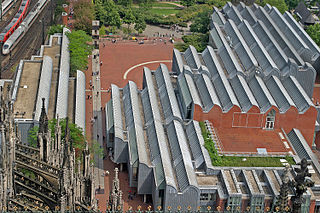
Museum Ludwig, located in Cologne, Germany, houses a collection of modern art. It includes works from Pop Art, Abstract and Surrealism, and has one of the largest Picasso collections in Europe. It holds many works by Andy Warhol and Roy Lichtenstein.

The Hamburger Kunsthalle is the art museum of the Free and Hanseatic City of Hamburg, Germany. It is one of the largest art museums in the country. The museum consists of three connected buildings, dating from 1869, 1921 (Kuppelsaal) and 1997, located in the Altstadt district between the Hauptbahnhof and the two Alster lakes.
Hilmar Friedrich Wilhelm Bleyl, known as Fritz Bleyl, was a German artist of the Expressionist school, and one of the four founders of artist group Die Brücke. He designed graphics for the group including, for their first show, a poster, which was banned by the police. He left the group after only two years, when he married, to look after his family, and did not exhibit publicly thereafter.

The Museum Wiesbaden is a two-branch museum of art and natural history in the Hessian capital of Wiesbaden, Germany. It is one of the three Hessian State museums, in addition to the museums in Kassel and Darmstadt.

Staatliche Kunstsammlungen Dresden is a cultural institution in Dresden, Germany, owned by the State of Saxony. It is one of the most renowned and oldest museum institutions in the world, originating from the collections of the Saxon electors in the 16th century.

The Landesmuseum Hannover or Niedersächsisches Landesmuseum Hannover is the museum of Lower Saxony in Hanover, Germany. It is located opposite the New City Hall. The museum comprises the State Gallery (Landesgalerie), featuring paintings and sculptures from the Middle Ages to the 20th century, plus departments of archaeology, natural history and ethnology. The museum includes a vivarium with fish, amphibians, reptiles and arthropods.
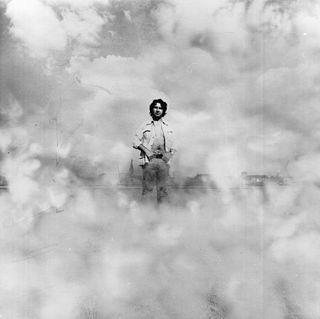
Gotthard Graubner was a German painter, born in Erlbach, in Saxony, Germany.
Rudolf Bredow, German post-expressionist painter, draughtsman and art teacher.
Karl Otto Götz often simply called K.O. Götz, was a German artist, filmmaker, draughtsman, printmaker, writer and professor of art at the Kunstakademie Düsseldorf. He was one of the oldest living and active artists older than 100 years of age and is best remembered for his explosive and complex abstract forms. His powerful, surrealist-inspired works earned him international recognition in exhibitions like documenta II in 1959. Götz never confined himself to one specific style or artistic field. He also explored generated abstract forms through television art. Götz is one of the most important members of the German Art Informel movement. His works and teachings influenced future artists such as Sigmar Polke, Nam June Paik and Gerhard Richter. He lived in Wolfenacker from 1975 until his death.
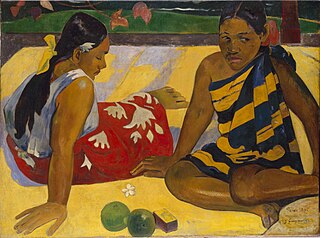
The Galerie Neue Meister in Dresden, Germany, displays around 300 paintings from the 19th century until today, including works from Otto Dix, Edgar Degas, Vincent van Gogh and Claude Monet. The gallery also exhibits a number of sculptures from the Dresden Sculpture Collection from the same period. The museum's collection grew out of the Old Masters Gallery, for which contemporary works were increasingly purchased after 1843.
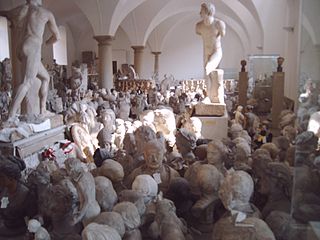
The Skulpturensammlung is part of the Staatliche Kunstsammlungen Dresden. It is located in the Albertinum in Dresden.

Oliver Mark is a German photographer and artist known primarily for his portraits of international celebrities.

The Veste Coburg is one of the most well-preserved medieval fortresses of Germany. It is situated on a hill above the town of Coburg, in the Upper Franconia region of Bavaria.
Max Uhlig is a German painter. He won the Hans Theo Richter-Preis of the Sächsische Akademie der Künste in 1998.
Georg Karl Pfahler was a German painter, printmaker and sculptor, and one of the leading proponents of post-war art in Germany.
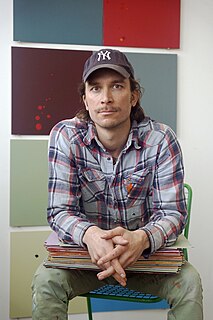
Jay Gard is a German artist. He lives and works in Berlin.

Große Berliner Kunstausstellung , abbreviated GroBeKa or GBK, was an annual art exhibition that existed from 1893 to 1969 with intermittent breaks. In 1917 and 1918, during World War I, it was not held in Berlin but in Düsseldorf. In 1919 and 1920, it operated under the name Kunstausstellung Berlin. From 1970 to 1995, the Freie Berliner Kunstausstellung was held annually in its place.

The Kunstsammlungen Zwickau – Max Pechstein Museum is a department of the Städtisches Museum Zwickau founded in 1925, which was inaugurated on 23 April 1914 as the King Albert Museum















